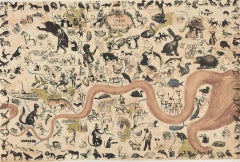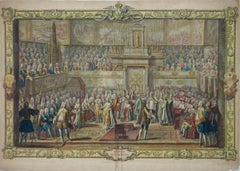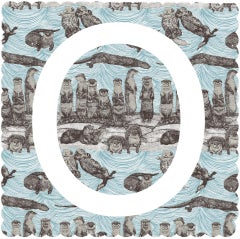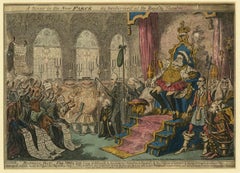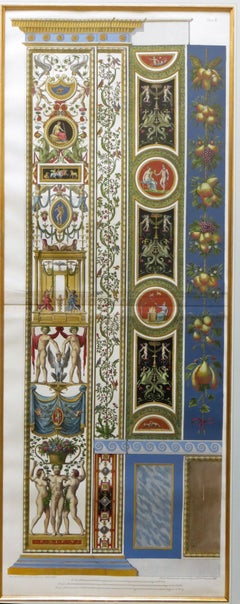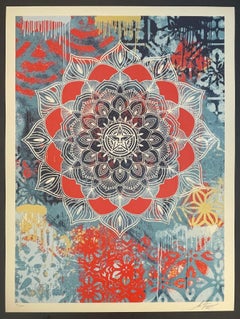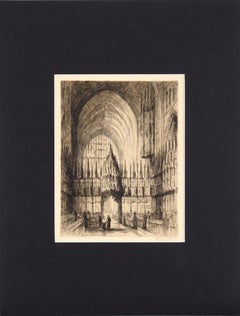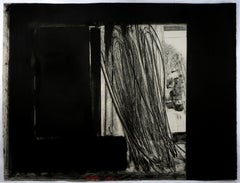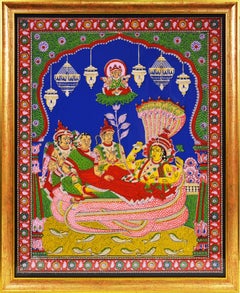Tapestry Interior Prints
to
1
3
1
1
2
Overall Width
to
Overall Height
to
2
1
1
1
1
1
1
1
2
1
1
3
2
5
2
467
958
453
334
207
204
203
192
185
183
129
113
107
92
89
87
85
82
67
65
3
3
3
2
2
5
2
Art Subject: Tapestry
Mychael Barratt, London Bestiary, Animal Art, Illustrated Cityscape, Happy Art
Located in Deddington, GB
London Bestiary by Mychael Barratt
Limited Edition Etching: Edition of 100
Image Size: H 66m x W 99.7cm
Complete size of Sheet: H 76.9cm x W 112.1cm x D 0.1cm
Signed and titled
Sold ...
Category
2010s Contemporary Landscape Prints
Materials
Paper, Screen
Le Roy Mene au Trone from Series Le Sacre de Louis XV 1722-1731
Located in Paonia, CO
Le Roy Mene au Trone from the Series Le Sacre de Louis XV (1722-1731 ) is an etching by French artist Charles Nicolas Cochin the Elder ( 1688-1754...
Category
1720s French School Figurative Prints
Materials
Etching
Clare Halifax, O is for Otter, Limited Edition Animal Print, Contemporary Art
Located in Deddington, GB
Clare Halifax
O is for Otter
Limited Edition 3 colour screen print
Edition of 100
Sheet Size: H 38cm x W 37cm x 0.1cm
Sold Unframed
Hand printed by the artist...
Category
21st Century and Contemporary Abstract Figurative Prints
Materials
Paper, Screen
A Scene in the New Farce —as performed at the Royalty Theater
Located in Middletown, NY
A Scene in the New Farce —as performed at the Royalty Theater
London: George Humphrey, 1821.
Etching and engraving on cream wove paper with extensive hand coloring in watercolor. 9 5/8 x 13 3/4 inches (244 x 348 mm), trimmed at the platemark. A beautiful impression of this large, intricate print...
Category
Early 19th Century Figurative Prints
Materials
Watercolor, Engraving, Etching
Logge di Rafaele nel Vaticano (Raphael's Loggia in the Vatican) Plate X Pilaster
By Gaetano Savorelli
Located in San Francisco, CA
Artists: Raffaello Sanzio d’Urbino.(1483 – 1520)
Gateano Savorelli, artist. (unk.- 1791)
Ludovico Teseo, draughtsman. (1731-1782)
Pietro Camporesi, architect (1726 - 1781)
Giovanni Ottoviani (1735-1808) & Giovanni Volpato (1735 – 1803), engravers
Title: Delle Logge di Rafaele nel Vaticano, Plate X (10)
Year: 1772-1777
Medium: Hand-colored copperplate engraving
Sight size: 42 x 16 inches.
Framed size: 55.5 x 28.5 inches
Condition: Very good
Frame: Frame in very good condition
A tall and incredibly detailed printed panel, “Delle Logge di Rafaele nel Vaticano” (“Raphael Loggia...
Category
1770s Renaissance Interior Prints
Materials
Engraving, Watercolor
Shepard Fairey Chaos Mandala SIlkscreen Fine Art Print Street Contemporary Art
Located in Draper, UT
This Chaos Mandala print merges two seemingly contrasting concepts and aesthetics…chaos and harmony. I have always been fascinated by the cyclical chaos of posters and graffiti accum...
Category
2010s Contemporary Interior Prints
Materials
Screen
Jewelry Choir Stalls of the Cathedral of St Cecilia, Albi; The Reredos
Located in Middletown, NY
Etching with aquatint on cream wove paper, 1 3/4 x 5 inches (178x 127 mm), full margins. Signed, dated and inscribed "Ed. 150" in pencil, lower margin. Second state (of 3), before th...
Category
Mid-20th Century American Modern Interior Prints
Materials
Etching, Handmade Paper, Aquatint
Related Items
Chester Cathedral - Drypoint Etching in Ink on Paper
Located in Soquel, CA
Chester Cathedral - Drypoint Etching in Ink on Paper
Dramatic drypoint etching by J. Alphege Brewer (British, 1881-1946). This composition shows the interior of Chester Cathedral in Brewer's characteristic style - highly detailed and with strong contrast. The scene encompasses the cathedral from floor to ceiling, capturing the immense size of the building. There are several people in the scene which contribute to the sense of scale.
Signed by hand "J. Alphege Brewer" in the lower right corner.
Titled "Chester Cathedral" in plate, lower left corner.
Includes original card with artist's name.
Presented in a new black mat with foamcore backing.
Mat size: 16"H x 12"W
Paper size: 10.75"H x 7.75"W
James Alphege Brewer was well known in the early 20th century as a producer of color etchings of European cathedrals and other scenes of church, college, and community. He was born July 24, 1881, in the Kensington section of London, England, the son of Henry W. Brewer, noted artist of historical architecture and prominent convert to the Catholic Church, and the grandson of John Sherren Brewer, Jr., “the brilliant editor of the Calendar of Letters of Henry VIII.” His great uncle was E. Cobham Brewer, the polymath who compiled Brewer’s Dictionary of Phrase and Fable. Among his older siblings were the artist Henry C. Brewer and the organist and writer John Francis Brewer.
Brewer attended the Westminster School of Art in London, where his brother Henry also trained. In 1910, he married Florence Emma Lucas, an accomplished painter in oil and watercolor, whose father was the noted landscape artist George Lucas and whose great uncle was David Lucas, the famous engraver for John Constable. Florence's brothers Edwin and George assisted Brewer in the printing of Brewer's etchings.
Brewer exhibited at the Royal Academy (RA) and the Royal Institute of Painters in Watercolour (RI), at the Paris Salon of the Académie des Beaux-Arts, and in the shows of the Royal Cambrian Academy (RCA). He became an associate of the Royal Cambrian Academy in 1929 and a full member in the last two years of his life. He was also a member of the Hampstead Society of Artists, the Society of Graphic Art, and the Ealing Arts Club, where he was first Honorary Art Secretary and then Honorary Art Chairman. Most of Brewer's larger etchings were published by Alfred Bell...
Category
Early 20th Century Romantic Interior Prints
Materials
Paper, Ink, Drypoint
$396 Sale Price
20% Off
H 16 in W 12 in D 0.25 in
Howard Hodgkin hand-colored Early Evening in the Museum of Modern Art
Located in New York, NY
Large scale black and white abstract interior scene with dots, lines, brushstrokes, and hand painting in grey, to hang in contemporary, modern and minimalist spaces. While British pop artists such as David Hockney and Patrick Caulfield numbered amongst Howard Hodgkin's circle of friends, Hodgkin's work is painterly, emotional, expressionist, and abstract.
Early Evening in the Museum of Modern Art, by Howard Hodgkin. Signed by the artist, numbered, and dated 79 lower center in red crayon. Soft-ground etching printed from the same plate as 'Late Afternoon in the Museum of Modern Art', with hand coloring in black gouache on Grey BFK Rives mould-made paper.
This print depicts an abstracted scene, perhaps a sculpture in front of a window in the Museum of Modern Art, Oxford, in Hodgkin's signature painterly style. The expressive mark-making in this print is an example of the artist’s movement in the late 70s towards pronounced gestures. Wide areas of deep black pigment contrast urgent swipes of ink. Always seeking greater richness in his prints, Hodgkin layered ink and hand coloring in this print, rendering each impression in the edition unique.
Part of a series of four prints reflecting on a visit to...
Category
Late 20th Century Abstract Interior Prints
Materials
Gouache, Etching
$2,250
H 29.5 in W 38.75 in
Days Gone
Located in New Orleans, LA
Finns always seek the solace of nature. Is this mysterious stairway an escape from the challenges of civilization? Vanttinen created this mezzotint in an edition of 100 and it is tit...
Category
Early 2000s Contemporary Interior Prints
Materials
Mezzotint
"The Doorway of Baalbec": A David Roberts' 19th Century Hand Colored Lithograph
Located in Alamo, CA
"The Doorway of Baalbec" is a 19th century full folio sized duotone lithograph, representing plate 81 in the Egypt and Nubia volumes of David Roberts’ large folio edition, published ...
Category
1840s Realist Interior Prints
Materials
Lithograph
$4,575
H 28.5 in W 22.38 in D 0.75 in
"King of the Friendly Islands" (Tonga); Engraving from Captain Cook's 3rd Voyage
By John Webber
Located in Alamo, CA
"Poulaho, King of the Friendly Islands, Drinking Kava" is an engraving created by William Sharp (1749-1824), from a drawing by John Webber (1752-1793), who was the artist on Captain James Cook's 3rd and final voyage of discovery. It was published in the atlas of "A Voyage to the Pacific Ocean Undertaken by the Command of His Majesty, for Making Discoveries in the Northern Hemisphere", the official British Admirality sanctioned journal published upon completion of the voyage in London in 1784 by Strahan & Cadell.
Captain Cook visited Tonga on his 3rd voyage, which he named The Friendly Islands because of the warm welcome he and his crew received, unlike some of the other more hostile Pacific islands. The engraving depicts Cook and his men observed a kava ceremony at the village of Mu’a on Tongatapu. King Paulaho sits in the centre foreground, his back to the spectator with a man kneeling before him. The ceremonial mat depicted behind Paulaho indicates that nobody was allowed to sit behind him. The figure in the centre holds a single cup, referring to the Tongan custom of offering the cup to the king first. Kava is native to the islands of the South Pacific and was first described for English readers in 1768 by Captain James Cook. The kava root has been used for centuries as a central feature of ceremonies and celebrations because it was able to bring about a calming and pleasant social atmosphere. The root was crushed and processed into coconut milk to become the focal ceremonial beverage, simply referred to as kava.
This engraving is presented in a Koa wood frame and a white mat. Koa wood is legendary in Hawaii. There are occasional faint spots, but the print is otherwise in very good condition. This amazing Koa wood is native to Hawaii and it is known for the deep rich colors and varied grain pattern. Koa has an honored heritage in Hawaii and is highly revered and sacred. The word “koa” means “warrior” in Hawaiian. The warriors of King Kamehameha the Great, created canoes and weapons from a wood plentiful on the Big Island of Hawaii. This wood became synonymous with the warriors themselves, and it became known as koa.
There are three other engravings listed from the official journal of Captain Cook's 3rd voyage available that are presented in identical Koa wood frames and mats (LU117324682422, LU117324684052, LU117324684032). They would make a wonderful grouping for a display of 2, 3 or 4 prints. A discount is available for a grouping depending on the number of items included.
Captain Cook is remembered as one of the greatest explorers and navigators in history. His explorations included Australia, New Zealand and islands of the South Pacific and the northwest coast of North America. Hawaii was discovered by Captain Cook during this voyage. Hawaii was originally called The Sandwich Islands in honor of The Earl of Sandwich...
Category
1780s Realist Figurative Prints
Materials
Engraving
$2,375
H 18.25 in W 23.5 in D 0.88 in
"Woman Walks into Bar" 53/450
By Sue Coe
Located in Houston, TX
Known for addressing difficult issues, this lithograph by Sue Coe tackles the difficult subject of rape culture. It is numbered in the lower left corner and signed and dated in the l...
Category
1980s Abstract Figurative Prints
Materials
Lithograph
Don Juan
By Louis Icart
Located in Missouri, MO
Aquating Engraving
Image Size: approx. 20 1/4 x 13 3/8
Framed Size: 28 x 20.5 inches
Pencil Signed Lower Right
Louis Justin Laurent Icart was born in Toulouse in 1890 and died in Paris in 1950. He lived in New York City in the 1920s, where he became known for his Art-Deco color etchings of glamourous women.
He was first son of Jean and Elisabeth Icart and was officially named Louis Justin Laurent Icart. The use of his initials L.I. would be sufficient in this household. Therefore, from the moment of his birth he was dubbed 'Helli'. The Icart family lived modestly in a small brick home on rue Traversière-de-la-balance, in the culturally rich Southern French city of Toulouse, which was the home of many prominent writers and artists, the most famous being Henri de Toulouse-Lautrec.
Icart entered the l'Ecole Superieure de Commerce de Toulouse in order to continue his studies for a career in business, particularly banking (his father's profession). However, he soon discovered the play writings of Victor Hugo (1802-1885), which were to change the course of his life. Icart borrowed whatever books he could find by Hugo at the Toulouse library, devouring the tales, rich in both romantic imagery and the dilemmas of the human condition. It was through Icart's love of the theater that he developed a taste for all the arts, though the urge to paint was not as yet as strong for him as the urge to act.
It was not until his move to Paris in 1907 that Icart would concentrate on painting, drawing and the production of countless beautiful etchings, which have served (more than the other mediums) to indelibly preserve his name in twentieth century art history.
Art Deco, a term coined at the 1925 Paris Exposition des Arts Decoratifs, had taken its grip on the Paris of the 1920s. By the late 1920s Icart, working for both publications and major fashion and design studios, had become very successful, both artistically and financially. His etchings reached their height of brilliance in this era of Art Deco, and Icart had become the symbol of the epoch. Yet, although Icart has created for us a picture of Paris and New York life in the 1920s and 1930s, he worked in his own style, derived principally from the study of eighteenth-century French masters such as Jean Antoine Watteau, François Boucher and Jean Honoré Fragonard.
In Icart's drawings, one sees the Impressionists Degas...
Category
1920s Art Deco Figurative Prints
Materials
Engraving, Aquatint
La Jolla, Framed Art Deco Screenprint by Thomas McKnight
Located in Long Island City, NY
La Jolla
Thomas McKnight, American (1941)
Date: 1987
Screenprint, signed and numbered in pencil
Edition of AP 6/40
Image Size: 26 x 29 inches
Frame Size: 37 x 39 inches
Category
1980s Art Deco Interior Prints
Materials
Screen
The Great Sphinx & Pyramids, Giza, Egypt: A 19th C. Lithograph by David Roberts
Located in Alamo, CA
This is an original 19th century duotone lithograph entitled "The Great Sphinx, Pyramids of Gizeh" by David Roberts, from his Egypt and Nubia volumes of the large folio edition, publ...
Category
1840s Realist Landscape Prints
Materials
Lithograph
$4,975
H 16.75 in W 23.75 in
Colossal Statue Luxor, Egypt: Original 19th C. Lithograph by David Roberts
Located in Alamo, CA
This is an original 19th century duotone lithograph entitled "A Colossal Statue at the Entrance to the Temple of Luxor" by David Roberts, from his Egypt and Nubia volumes of the larg...
Category
1840s Realist Landscape Prints
Materials
Lithograph
$775
H 23.75 in W 16.75 in
The Great Hall at Karnak, Luxor, Egypt: A 19th C. Lithograph by David Roberts
Located in Alamo, CA
This is an original 19th century duotone lithograph entitled "Great Hall at Karnac, Thebes" by David Roberts, from his Egypt and Nubia volumes of the larg...
Category
1840s Realist Landscape Prints
Materials
Lithograph
$4,375
H 23.88 in W 16.75 in
Approach of the Simoon, Giza, Egypt: Original 19th C. Lithograph by D. Roberts
Located in Alamo, CA
This is an original 19th century duotone lithograph entitled "Approach of the Simoon, Desert of Gizeh" by David Roberts, from his Egypt and Nubia volumes of the large folio edition, ...
Category
1840s Realist Landscape Prints
Materials
Lithograph
$9,975
H 16.75 in W 23.88 in
Previously Available Items
South Asian Wallpaper: Group of Five Wallpaper Designs
Located in London, GB
5 designs on local paper hand-painted through stencils, some partly heightened with gold and silver, each sheet 56 x 66 cm.
[Late 19th/Early 20th Century]
A rare survival. Unlike ...
Category
Early 20th Century Naturalistic Interior Prints
Materials
Watercolor, Handmade Paper, Stencil
